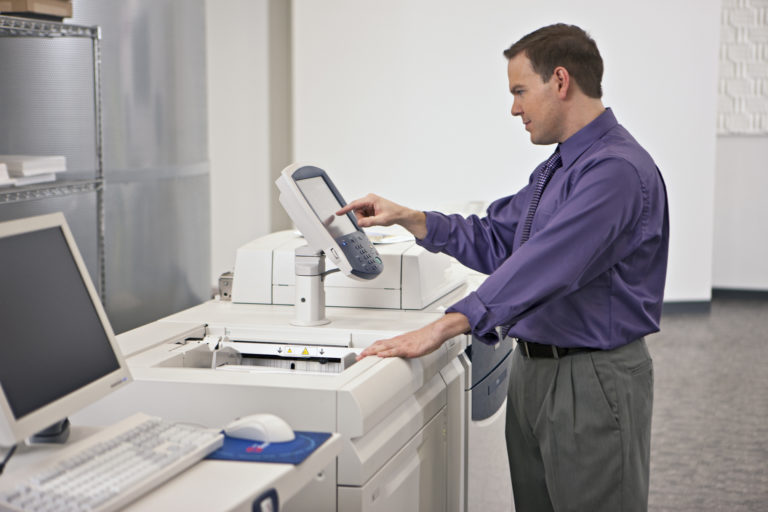The highest value print work usually involves variable information, yet less than 10 percent of all digital printing is variable, according to Rochester Institute of Technology Professor Emeritus Frank Romano.
Progressive Communications, based near Orlando, Fla., is working to buck that trend. In a little more than two years after initiating digital color printing, more than 85 percent of the firm’s 1-million-plus monthly digital color pages were variable. Today I wanted to share with you how they’ve made the leap so quickly.
Seeking ‘More Bang for the Buck’
Like many traditional printers, by mid-decade Progressive felt the economic pinch. “Our customers were cutting their marketing budgets, print runs and mailings,” said Gabe Hernandez, general manager, Progressive Communications. “We wanted something that could give us more bang for our buck, so we started looking at digital printing.”
This wasn’t the first time Progressive had explored new directions. Founded in 1975 as a newsletter production company, the firm evolved into a commercial printer and became a full-service print, fulfillment, direct marketing and multimedia design operation with two 2002 acquisitions. Today, Progressive has 220 employees and is a division of printing and marketing services company Taylor Corporation.
Their digital color exploration began in 2007 with the acquisition of a Xerox® DocuColor® 242 Digital Color Printer/Copier. “We responded to the opportunity in partnership with Xerox, because we want to be more than ink on paper,” Hernandez said. “We want to provide solutions to our customers to help them increase their sales.”
Progressive already had many of the skills required for digital color variable information success. A 12-member design department regularly wins awards for direct marketing and promotional pieces, and Progressive’s data team routinely programmed basic black-and-white personalization. By adding a person experienced in Xerox’s XMPie software, the firm could execute a wide range of personalized direct marketing programs.

Tapping into Xerox Business Development Support
For help in selling and marketing the new services, Progressive turned to a Xerox Business Development Consultant, who worked with them for three months while providing consultative sales training and also helped develop a marketing plan using the Xerox® Marketing Accelerator Kit. This professional support service is offered by Xerox to help organizations operate at peak efficiency, and Progressive took full advantage.
To ease entry into the somewhat recession-proof healthcare and education markets they targeted, Progressive used the Xerox® ProfitAccelerator® vertical market kits and landed several new clients. And they referenced the Xerox® ProfitAccelerator Open House Kit to plan ongoing “Summer School” educational seminars, promoting its services to prospects and clients.
In addition to the campaign work they do for clients, Progressive also regularly runs self-promotion campaigns. A recent multi-touch effort used a PURL to offer a calendar with images incorporating the prospect’s name in exchange for filling out a questionnaire on their marketing needs. Results included a 17 percent response rate, a 68 percent conversion rate, more than 20 one-off jobs and several ongoing communications programs. In addition, this campaign helped Progressive win the Best Overall Solution Award in the 2010 Xerox Best-of-the-Best contest.
Focus on Personalization
With so much preparation, Progressive quickly grew its digital color business. In just six months, they needed a larger press and acquired a Xerox® iGen3® 110 Digital Production Press. A year later, they added a second, and subsequently upgraded both to Xerox® iGen4® Presses.
“Initially we thought we would just do short-run, quick-turn static work,” Hernandez said. “But since we had the ability to produce truly personalized pieces that get better results, we said, ‘Let’s go for it.’ We discovered that many of our customers were gathering data on their customers’ demographics but weren’t using it—until we helped them.”
Digital color has driven growth at Progressive in two ways. First, while offset has slipped from 95 percent of the shop’s print volume three years ago to 80 percent today, digital has grown to 20 percent, with about half of it coming from new clients. In addition, digital drives more work in other Progressive divisions. Some 95 percent of digital jobs use Progressive mailing services compared to 50 percent with offset, and 80 percent are designed by Progressive’s creative team, compared to 25 percent with offset. The cross-selling of services opened up through digital has proven to be extremely profitable for Progressive.
By 2015, Hernandez believes that half of Progressive’s business will be color variable printing, in which case, Progressive is not just bucking a trend; it is leading one.
7 Comments
Comments are closed.



I am attempting to locate copy of the 11976 and 1977 Xerox annual report. Can you assist me?
Thank you
John Sosnovski
Hello, John. Thank you for stopping by and taking the time to comment. I’m more than happy to assist. I will contact you via email shortly.
All the best,
Bill (Xerox)
Hi Bill,
I am working on helping one customer in the education sector ( Public ) to add digital printing along with offset. I wonder of you can help me with a business case presenting the advantages and the added value of digital printing side by side with offset or even vs offset.
Thanks a lot in advance.
Beaman
Hello Beaman – thank you for reaching out! I’m sure I can find something that will help you. I’ll be back in touch shortly.
Bill (Xerox)
Hi there – I’m back quicker than I thought!
One great resource for digital print business cases is our collection of case studies. You can find those at http://www.xerox.com/productioncasestudies. You’ll see along the top the ability to filter by ‘Industry’. In your case, I’d recommend ‘Education: Higher Ed’ and ‘Education: PreK-12’. A few good examples of offset and digital print technologies co-existing in an educational environment are Suez Canal University and Bucknell University. Another good one to check out is San Diego Mesa College, whose 100% digital operation has increased print volume by 20% while lowering print costs by 60%. There are plenty of other good examples as well. Please let me know if you have any other questions.
Bill (Xerox)